Europe’s largest port hosted millions of emigrants at the turn of the century and weclomes millions more to visit today.
Hamburg, Germany’s largest port and one of Europe’s key trans-shipment centers, has long shown visitors from around the world a good time. Said to be the city with Germany’s youngest and most creative population, it lures more and more sophisticated travelers each year. Low cost carriers from throughout Europe bring in weekend party-goers, so the city’s Red Light district and clubs on the famed Reeperbahn (the main nightlife thoroughfare) are throbbing with a multi-cultural throng.
However, a summer visit convinced us that families with school-age children will also find Hamburg a great weekend destination.
Hamburg, Hipper & More Multi-National
Adults who recall Hamburg prior to the fall of the Berlin Wall may concur with Ian Fleming’s description from his 1959 collection of travel essays, Thrilling Cities: “the last bastion in Europe of ‘anything goes.'” A new generation comes to admire the Indra, the club where the Beatles first performed in 1961, and other sites related to the Fab Four’s early days in this wild city. In fact, you can check out Dr. Mark A. Schneegurt’s cool Beatle Fan Walking Tour for more info about this aspect of the city.
Past visitors to Hamburg won’t forget the Reeperbahn, the city’s funky multi-lane artery of shops, restaurants and clubs in the St. Pauli district. To explore, catch the U-Bahn subway to St. Pauli, then walk from there; it’s a very long boulevard with lots to see and many over-scale buildings typical of this larger-than-life city.
On the eastern side of Elbpark, one of Hamburg’s 1,400 parks and gardens, are many historic highlights. The steepled Grosse Michaeliskirche (St. Michaelis Church) dominating the skyline is considered the most important Baroque Protestant church in northern Germany. Dating to 1751, it is especially known for the sound of its three huge organs. The Michel’s Tower can be toured day or night for great city views. St. Nikolaikirche is worth a stop; it was gutted by bombing during WWII, but its burnt neogothic façade remains standing as a reminder of all those who died.
The impressive architecture housing the Hamburg History Museum, Brahms Museum and other vast collections comprise the area known as Museum Mile. The enormous Rathaus or City Hall is a huge sandstone building dating from 1886. It’s a bit larger than Buckingham Palace with its 647 rooms and still houses the city parliament and senate. Plan on paying a visit to its lavishly decorated rooms any day of the week. English language tours are given regularly, though visitors are not allowed in during official events.
The Hamburger Bahnhof is a fantastic converted train station that houses the city’s modern art collection. From the Max Liebermann paintings to the Andy Warhol portraits, kids will have a lot of fun here. If the weather is fair (Hamburg can get extremely hot and extremely cold), consider joining one of the many walking tours of Alt-Hamburg, the old city center, that depart from the Rathaus.
Harbor City Welcomes the World
The stalwart shipping industry has embraced the aeronautics (the Airbus-A380 is produced here) and high tech industries. For a fascinating view of the region’s shipping history, pay a visit to the Stiftung Hamburg Maritim maritime museum (+49 40 78 10 48 48; Geschäftsstelle Australiastrasse Schuppen 50B, 20457 Hamburg); it’s open daily except Monday from April to October.
Speicherstadt, the 19th century Warehouse District by the Elbe River and near passenger cruise piers, boasts glass and steel condos next to canals next to renovated red brick warehouses where sugar and spices once were stored. You don’t have to be an architecture buff to appreciate the stunning white glass vertical Opera House installed above a former banana warehouse.
Recent immigrants from Asia and the Middle East hang the woven rugs they’ve brought to sell from warehouse windows and loading docks, lending it the air of Istanbul’s colorful Grand Bazaar.
Immigrants fueled the economic growth of the former West Germany after it developed a program to welcome gastarbeiter or guest workers in the 1960’s. Hamburg’s noted Afghan Art & Culture Museum (+49 40 – 37 82 36; Am Sandtorkai 32/1, D-20457 Hamburg) celebrates just one of the many cultures that have assimilated here; the influence of Turkey’s cuisine and arts is even more pronounced.
Nearby, apartments and a state-of-the-art aquarium are under construction in the futuristic waterfront development of Hafencity, a family-oriented housing project due in 2012. Visitors of all ages will enjoy learning more about it at the HafenCity Info Centre (+49 40 36 90 17 99) located at Am Sandtorkai 30 and the corner of Kesselhaus. Even better, join a Hamburg harbor cruise; the tourist office or your hotel concierge can help you select the best itinerary (of historic areas, contemporary shipping terminals, even daytrips to Sweden) to suit your interests.
An alternative way to tour Hamburg by water is the slow boat that plies the Binnenalster (Inner Alster) and Aussenalster (Outer Alster) Lakes. This picturesque, low-rise, high-rent area benefits from strict preservation laws. Starting from the Jungfernstieg Jetty, riverboats circle the shore as narrators serve drinks, pointing out celebrity homes and other architectural highlights. Families can choose between bi-lingual guided Aalster Cruises or the cheaper hop on/hop off ferries. At the Fahrdamm stop is a public park with a large café and walking paths, and there are other quiet docks along the shore where paddleboats are available for rent.
Honoring Those Who Left: Emigration
One of this maritime city’s newer attractions is the Ballinstadt Museum, commemorating Hamburg’s legacy of emigration. More than five million Europeans from as far as Russia and the Baltic states sailed to a better future from this port between 1890 and 1920, largely via what would become HAPAG Lloyd Shipping Lines and mostly to the United States. The Museum is located on Veddell Island in the Elbe River (easily reached from downtown by ferry or the S-Bahn train) within the original brick buildings where emigrants might have waited weeks to get the outbound processing and medical exams required by receiving countries.
Three of the 30 large Emigrant Halls are exhibit spaces: one is full of computer stations where eager visitors trace their own family genealogy by studying passenger records from HAPAG ships between 1850 and 1934, like Ellis Island in reverse. Another building houses costumed mannequins who are brought to life in tableaus of home, work and leisure activity with props, multimedia screens, videos and recordings; and the third is devoted to the historic memorabilia of the era. Newspaper clippings of world events, graphs, charts, historic film clips and the voices of elderly emigrants tell the fascinating and poignant stories of why so many people chose to leave their home countries in search of a new life.
The museum is named after Alfred Ballin, HAPAG’s managing director who insisted in 1898 that housing be built for his passengers at a cost of 3 million reichmarks. The comforts he made available to emigrants waiting in 22-bed dorms are surprising. Bilingual displays explain his largesse: from the years 1901-1934, more than 5 million people arrived at the “Port of Dreams” awaiting passage, and the astute Mr. Ballinn wanted to make sure they filled berths on his Hamburg-Amerika Linie instead of sailing with a competitor. Families can learn how women and children were segregated from the men, and how separate Kosher and regular kitchens were available to emigrants of different faiths. Facilities were kept very clean and all potential passengers had to have their clothes disinfected regularly. Mr. Ballin can also be called the father of modern day cruising, because after transporting passengers so profitably, he assigned a HAPAG vessel to sail the first pleasure cruise for other Europeans.
Details, Details
Hamburg has excellent public transportation, and English is widely spoken. One sightseeing option if you’re limited to a brief stay is the Hamburg Stadt Rundfahrt double-decker bus tour.
Alternatively, the Hamburg Tourist Board (+49 40 30 05 13 00) offers a Hamburg Card enabling families interested in lots of sightseeing to ride all public transport free, get 15%-30% discounts on many admission prices, and 10% off in many shops.
In this multi-cultural city are several shopping districts; keep in mind that style-setters such as Jil Sander and Karl Lagerfeld hail from this creative city.
Our favorite is the exclusive Neuer Wall, nicknamed “Chic, Sheik, Shock” from the story of a stylish woman who bought the latest fashions, asked her Arab sheik to pay, then watched him go into shock from the bill! The fun and walkable Monckebergstrasse is considered the shopping mile, Spitalerstarasse is a pedestrian mall, and Colonnaden is another small street of designer boutiques… but the soaring euro may diminish your interest in purchasing anything.
On the other hand, the Hamburg Tourist Board works with dozens of local hotels and international chains to create value packages and posts them on its website. At our visit, the Best Western Hotel St. Raphael (+49 40 24 82 00), conveniently located at Adenauerallee 41, Hamburg 20097, was offering a special tied in to “The Lion King” musical that has been playing in Hamburg for seven years (to great acclaim). It’s a short walk from here to the Hauptbahnhof (main train station), museums and shopping, and standard rooms sleep three.
If you want to stay in Ian Fleming’s favorite hotel, the Fairmont Hotel Vier Jahreszeiten (+49 40 34 94 0) on the shore of the Inner Alster Lake at Neuer Jungfernstieg 9-14, 20354 Hamburg, it’s still there. This famed European landmark has been serving royalty and celebrities its special brand of hospitality for over 100 years. Among the 157 beautifully finished rooms and suites are some with two beds and room for a rollaway, but you’ll pay at least double the rate of many other choices.
Dear Reader: This page may contain affiliate links which may earn a commission if you click through and make a purchase. Our independent journalism is not influenced by any advertiser or commercial initiative unless it is clearly marked as sponsored content. As travel products change, please be sure to reconfirm all details and stay up to date with current events to ensure a safe and successful trip.

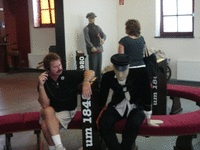
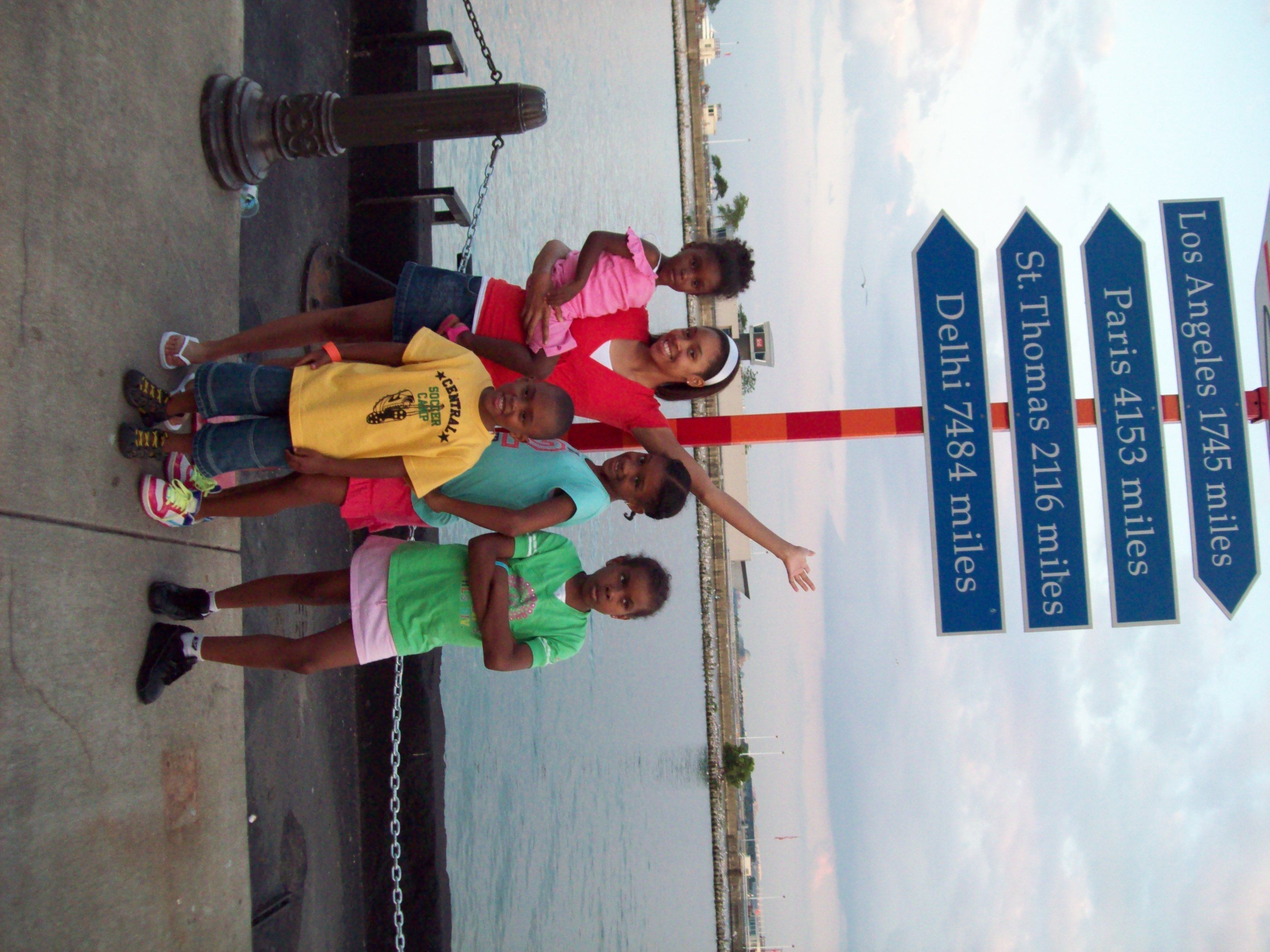
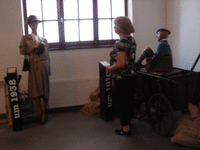
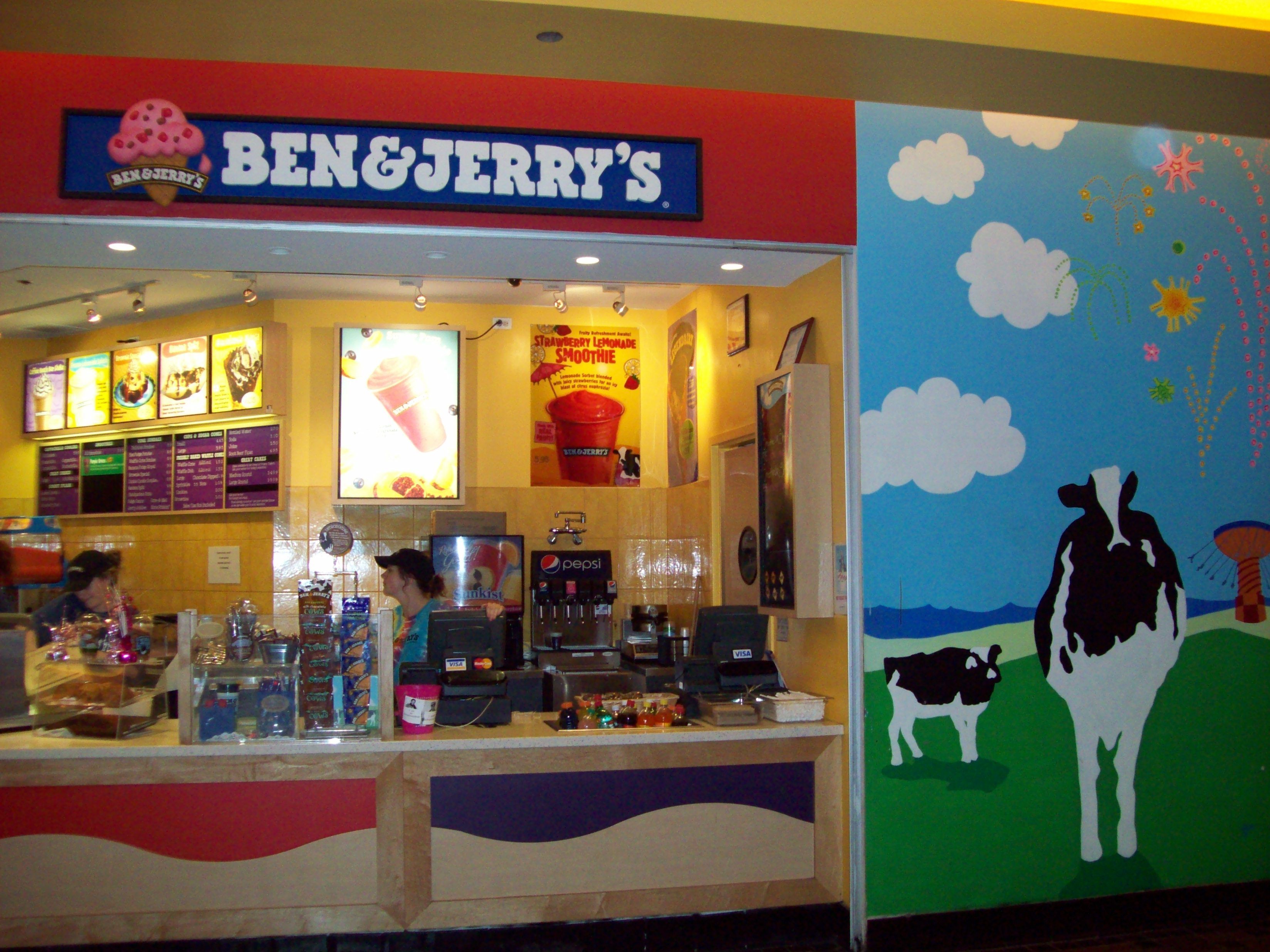
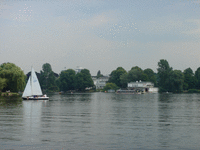

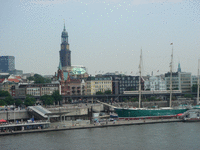
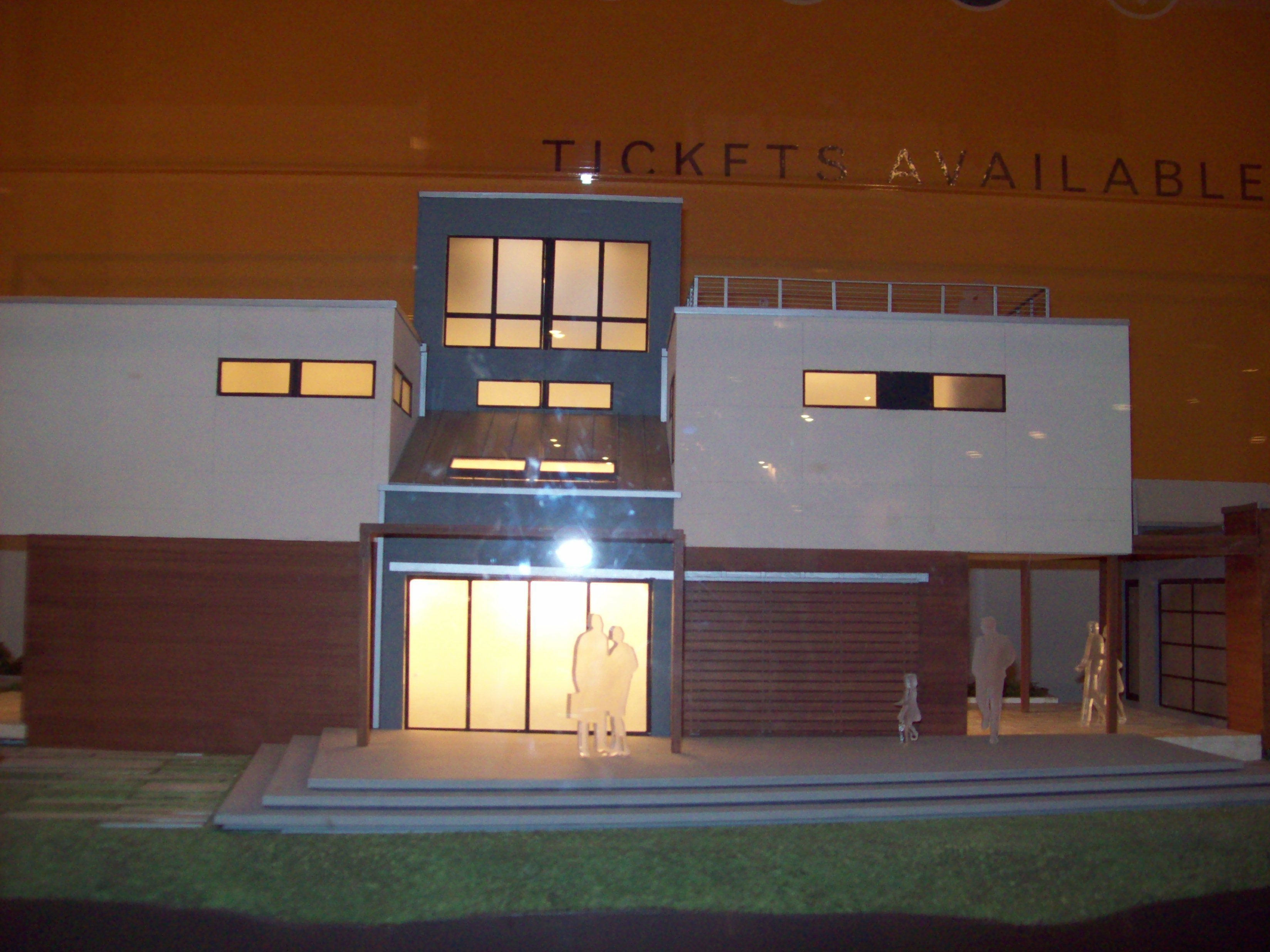
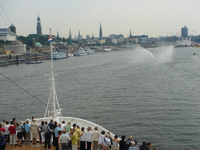

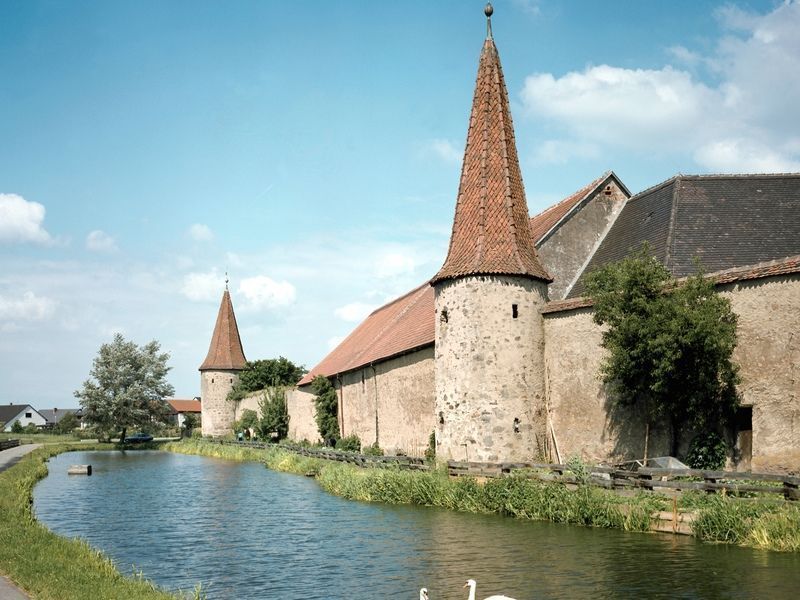
hamburg ist a beautiful city, ya. I especially like the Aalster area with its trees.